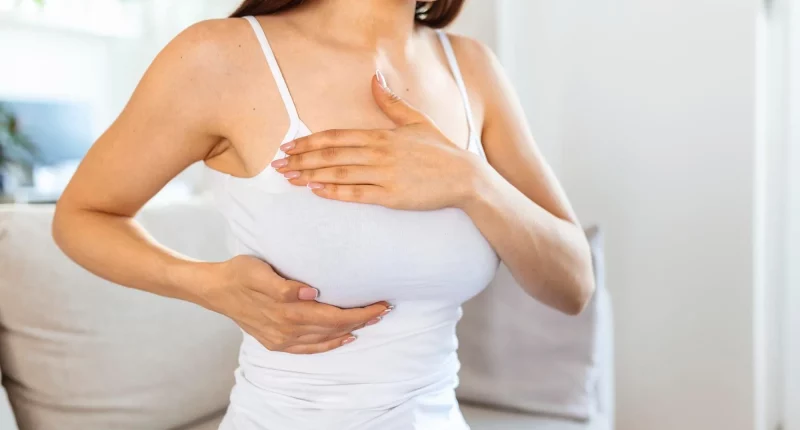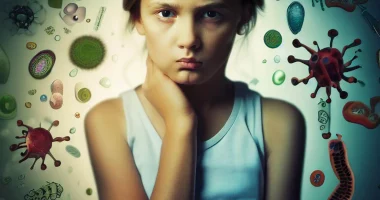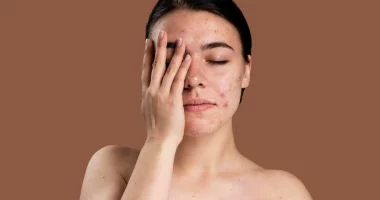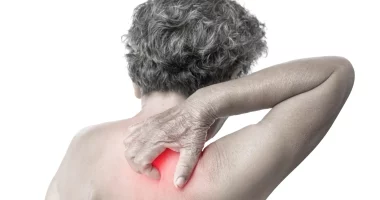A breast lump is a small, raised area in the breast that feels different from the rest of the breast or the same area on the other side. These lumps can happen due to various reasons like infection, injury, fibroadenoma (a non-cancerous growth), cysts, fat changes, or fibrocystic breasts. They can occur in both men and women but are more frequent in women. While some lumps can be cancerous.
Causes
The female breast is made up of different kinds of tissue. The main kinds are milk glands, which make milk, and milk ducts, which are tubes that carry milk to the nipple.
Additionally, the breast contains fibrous connective tissue, nerves, fatty tissue, lymph nodes, and blood vessels.
The composition of breast tissue can change depending on its function. For instance, during breastfeeding, breasts undergo changes in how they look and feel. These changes can also happen all over the monthly cycle.
Each area of the breast can react differently to alternates in the body’s chemistry, which can affect how the breast feels and its texture, leading to the growth of breast lumps.
There are various reasons why breast lumps might form, including:
- Cysts
- Breast cancer
- Fat necrosis
- Abscesses
- Fibroadenoma
- Intraductal papillomas
- Lipoma
- Gynecomastia in males, which is inflammation in tissue of the breast
Some breast lumps have a clear edge, while others feel like a thickened area of tissue. Some lumps can also cause nipple discharge.
Types and Symptoms
Lumps in the breast can grow for many reasons, both cancerous (malignant) and noncancerous (benign). The symptoms may differ depending on the lump causes.
Noncancerous (benign) Lumps
The feel, size, and character of breast lumps can differ a lot. These characteristics can help a doctor figure out what kind of lump it is.
Breast Cysts
A breast cyst is a noncancerous, fluid-filled sac in the breast. They often affect women aged 30–50 years and are rare after menopause. A person with a breast cyst may notice a smooth, rubbery lump under the skin, nipple discharge, and pain.
The exact cause of breast cysts is unknown, but they might grow due to hormones connected to the Menstrual cycle. Cysts can be complex or simple, and a healthcare provider might recommend removing them by aspiration, a type of minor surgery. Very infrequently, a cyst that comes back after being removed might be linked to breast malignancy.
Abscesses
Abscesses are noncancerous lumps that sometimes grow in the breast, particularly during breastfeeding. They usually outcome from a bacterial infection like mastitis. Symptoms include a mass or lump, swelling and pain, redness or darkening of the skin around the lump, nipple discharge, vomiting and nausea, fever, and swelling of lymph glands.
Treatment typically involves draining the abscess, using antibiotics, and using pain relievers like ibuprofen. If an abscess occurs when not breastfeeding, a doctor may test for breast cancer.
Fibroadenoma
A fibroadenoma is a noncancerous development of glandular tissue. It has characteristics include a rubbery, round solid lump, with painless, smooth borders, most typically appears in women aged 14 to 35 years but can happen at any age
Fibroadenomas often disappear and shrink over time, but large ones might be eliminated following surgery.
Intraductal Papillomas
Intraductal papillomas are noncancerous, wart-like developments that grow in the breast ducts. They frequently form an oval or round mass, grow under the nipple, and cause bloody or clear discharge
A healthcare provider can eliminate an intraductal papilloma and will possibly examine the tissue to eliminate cancer or other issues.
Fat Necrosis
This occurs when fatty matter in the breast doesn’t get enough oxygen, leading to damage and breakdown. It may occur after surgery, a biopsy, trauma, or particular medical treatments. Symptoms include lumps caused by oil cysts, a modification in breast shape, and pain.
Lipoma
It is a non-cancerous, fatty tumor that is movable, soft, and painless.
Lipomas can happen at any place on the body, as well as the breast, and typically don’t need treatment.
Cancerous Lumps
A breast cancer tumor or lump can show in the underarm or breast. Warning symptoms include:
- A thickening, lump, or inflammation of the breast
- Irritation or dimpling of skin
- Scaly skin around the nipple, which may be darker than the surrounding skin
- Nipple inversion
- Nipple pain
- Nipple discharge
- Modifications in the shape or size of the breast
- Pain in the breast
Some individuals may not have any symptoms, so following a healthcare provider’s suggestions about screening is important. The signs of breast cancer can be similar to other breast lumps, so it’s important to seek medical advice if there are any changes in the breasts.
Procedures
If someone consults a doctor about a breast lump, they may need to undergo several tests to determine the cause. The first step is usually a physical examination, where the doctor will feel the lump and check for other signs. Following this, a mammogram, which is an X-ray of the breast, may be performed to get a clearer view of the lump and surrounding tissue.
A breast ultrasound scan might also be used, as it can provide detailed images of the lump using sound waves. In some cases, a breast biopsy is necessary to rule out cancer. During a biopsy, a small sample of the lump is taken and examined under a microscope. Additionally, a CT scan or MRI may be conducted to see if there have been any changes in other parts of the body. These imaging tests provide a comprehensive view and help in making an accurate diagnosis.
When to consult a doctor
It is important to see a doctor if you notice any of the following symptoms:
- A mass in the under the arm or breast
- Changes in the nipple, such as discharge or inversion
- Dimpling or puckering of the skin
The United States Preventive Services Task Force advises that women start asking about breast monitoring at age 50 or earlier if they have threats about their chance of growing breast cancer. Some women choose to begin screening at age 40, especially if they have a medical history of breast cancer or believe that the benefits of early detection exceed the risks.
Treatment
A healthcare provider should examine any unexplained breast mass, though not all lumps will require immediate medication.
For fibrous lumps or cysts, the healthcare provider might suggest monitoring them without further action. If an abscess is present, the healthcare provider may reduce it with a sharp needle and suggest antibiotics to treat the infection.
If the lump is cancerous, treatment typically includes a combination of chemotherapy, radiation therapy, surgery, and hormonal drug treatment. Additionally, the healthcare provider may suggest genetic testing for mutations in the BRCA1 or BRCA2 genes. If such a genetic change is detected and breast cancer is present, preventive surgery might be suggested to reduce the risk of recurrence. Other family members may also consider additional screening if these genetic changes are found.
Summary
Breast lumps can be cancerous or noncancerous, with varying symptoms like pain, nipple discharge, and changes in breast texture. Noncancerous lumps, such as cysts, abscesses, and fibroadenomas, often require minimal treatment, while cancerous lumps may need surgery, chemotherapy, radiation, and hormonal therapy.
Regular breast screening is advised, especially for women over 50 or those with a family history of breast cancer. Diagnosis involves physical exams, mammograms, ultrasounds, biopsies, and sometimes MRIs or CT scans. Genetic testing for BRCA1 or BRCA2 may be recommended if cancer is present, influencing treatment and preventive measures. Always seek medical advice for any unexplained breast changes.








